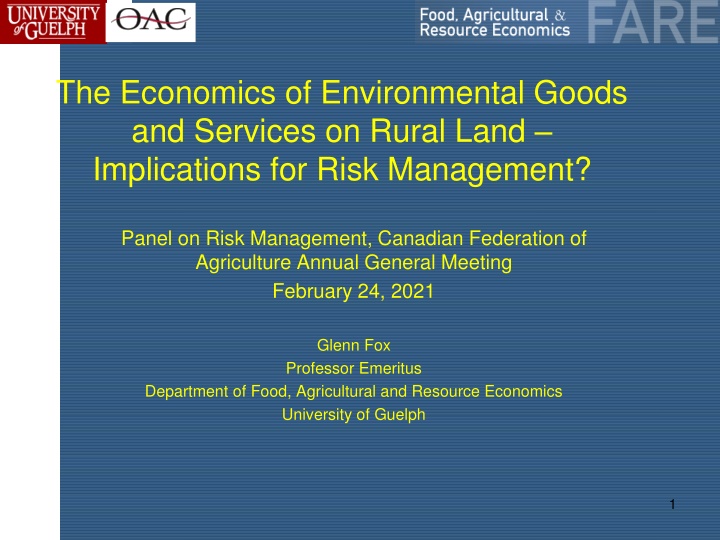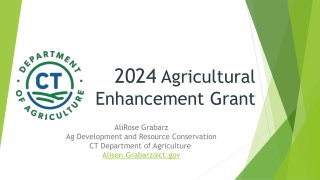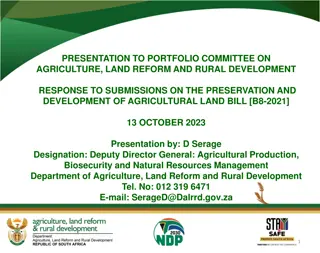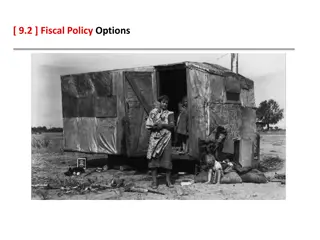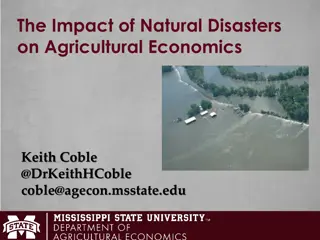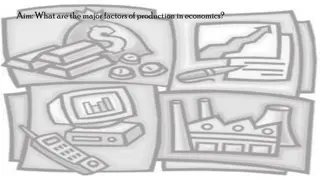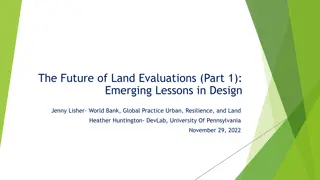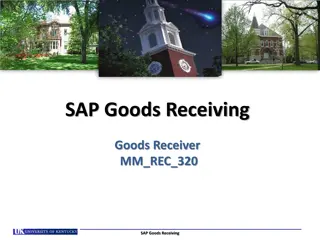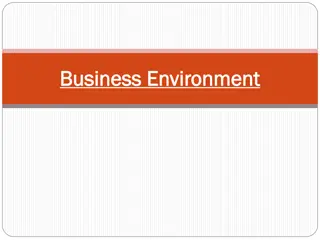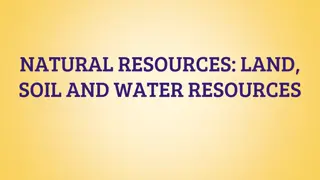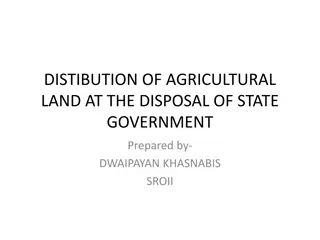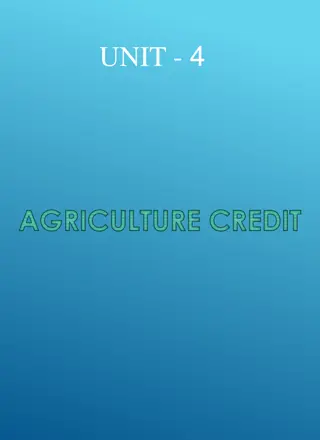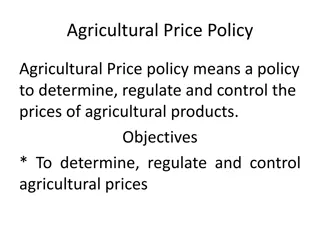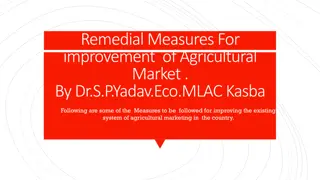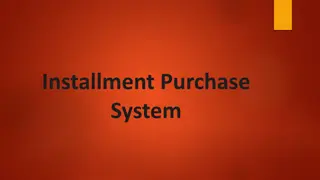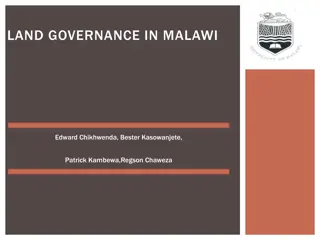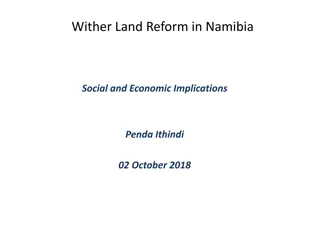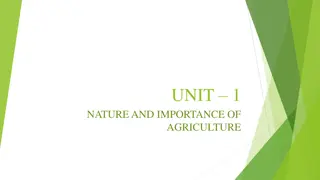Agricultural Land: Economics of Environmental Goods
Implications for risk management in promoting habitat and amenities on agricultural land through approaches like land use planning, club goods theory, and the EU Farm to Fork proposal. Learn from lessons of experts in the field.
Download Presentation

Please find below an Image/Link to download the presentation.
The content on the website is provided AS IS for your information and personal use only. It may not be sold, licensed, or shared on other websites without obtaining consent from the author.If you encounter any issues during the download, it is possible that the publisher has removed the file from their server.
You are allowed to download the files provided on this website for personal or commercial use, subject to the condition that they are used lawfully. All files are the property of their respective owners.
The content on the website is provided AS IS for your information and personal use only. It may not be sold, licensed, or shared on other websites without obtaining consent from the author.
E N D
Presentation Transcript
The Economics of Environmental Goods and Services on Rural Land Implications for Risk Management? Panel on Risk Management, Canadian Federation of Agriculture Annual General Meeting February 24, 2021 Glenn Fox Professor Emeritus Department of Food, Agricultural and Resource Economics University of Guelph 1
Context Beyond food and feed grains, fruits and vegetables, livestock and livestock products, agricultural land can produce other good things Habitat, water flow regulation, scenic amenities Ecological goods And other bad things Contamination of water and air quality Ecological Bads I will talk briefly about three approaches to the promotion of non-traditional goods and services on agricultural land, Ecological Goods and Services And their connection to risk management 2
Lessons learned from the work of . . . . . Jessica Rosenberg Paul Guerra Maria Klimas Brook Coatsworth Monika Drodz 3
Three approaches to promoting habitat and amenities on rural lands 1. 2. 3. Planning, Designation and Regulation Club Goods Theory The EU Farm to Fork proposal 4
1. Planning, Designation and Regulation Land use planning approach Restrictions on land use when habitat is identified No compensation for landowner social obligation of land ownership Perverse incentive Inequitable distribution of costs and benefits Risk management turns and environmental asset into a liability 5
2. Club Goods Theory Private goods, public goods and club goods Club goods: A group of people organize, pool their resources to achieve a shared purpose Benefits accrue to non-members Hunters and anglers form organizations to encourage landowners to modify their practices in a way that enhances wildlife richness and abundance And they raise funds to pay landowners to do this This turns an environmental liability into an asset, from a landowner s point of view e.g. Trout Unlimited, Ducks Unlimited, Delta Waterfowl The ALUS program 6
Risk Management Aspects Revenues from environmental goods and services are likely uncorrelated with commodity prices Portfolio balance benefit Charities can default (sad personal experience) Creates a new demand for land which might compete with current tenants and aspiring buyers 7
3. The EU Farm to Fork Program Grand scheme to address almost every conceivable problem with the food system Specific land use outcomes e.g. 25% of land devoted to organic production USDA modeling reduction in UE ag output, increase in world food prices good for Canadian farmers? Comments: Combines problems that have different causes (and remedies) Requires implementation by Member States Unlikely to be implemented as currently proposed The subsidies are always greener on the other side of the fence Not a model for Canada 8
